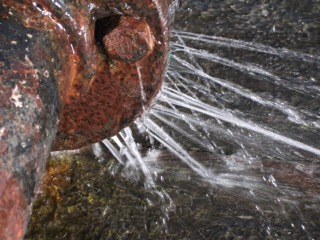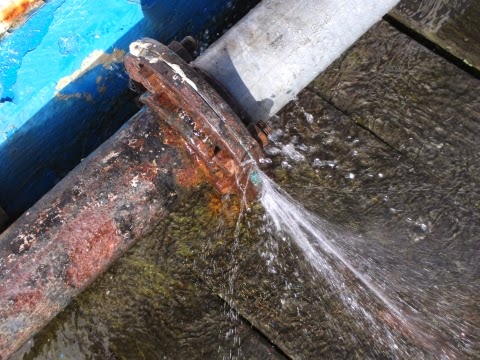From Detection to Correction: A Fast Approach to Handling Burst Pipes
From Detection to Correction: A Fast Approach to Handling Burst Pipes
Blog Article
How do you actually feel on the subject of How to Prepare for Your Dishwasher Installation?

A ruptured pipe is a major emergency; you can only stand as you enjoy water you pay a lot to reunite with the earth. In worse situations, you see a swimming pool on your kitchen floor, which is an excellent journey threat, especially if you have children around. If the pipe that ruptured remained in your wall surfaces, trouble: you may need to repaint that entire section.
Exactly how can a catastrophe like a ruptured pipe be avoided as well as handled? Well, by paying attention to your specialist emergency plumbing professionals and following these guidelines.
How do I know when my pipes have burst?
Varying water pressures
Pipes do not just burst in a day. You may have noticed that your kitchen tap or shower doesn't run instantly when you turn the faucet. It may pause for a few seconds and then blast you with more pressure than common.
In various other circumstances, the water might appear typical initially, after that drop in pressure after a few seconds.
Contaminated water
Many people think a ruptured pipeline is a one-way electrical outlet. Rather the contrary. As water drains of the hole or gouge in your plumbing system, contaminants find their way in.
Your water might be infected from the resource, so if you can, inspect if your water tank has any problems. Nonetheless, if your alcohol consumption water is provided as well as purified by the city government, you need to call your plumber quickly if you see or scent anything funny in your water.
Puddles under pipes and sinks
When a pipeline ruptureds, the outflow forms a pool. It might appear that the puddle is expanding in dimension, and no matter the amount of times you wipe the puddle, in a few mins, there's one more one waiting to be cleaned. Often, you might not be able to map the puddle to any noticeable pipelines. This is a sign to call a specialist plumber.
Damp walls and water discolorations
Before a pipeline ruptureds, it will leakage, a lot of times. If this persistent dripping goes undetected, the leak might graduate into a large laceration in your pipe. One very easy way to prevent this emergency is to watch out for wet wall surfaces ad water discolorations. These water spots will lead you right to the leakage.
Untraceable dripping sounds
Pipe bursts can occur in the most undesirable places, like within concrete, inside wall surfaces, or under sinks. When your home goes quiet, you may have the ability to listen to an annoyingly consistent trickling sound. Even after you have actually checked your shower head as well as kitchen faucet, the dripping might continue.
Precious reader, the leaking might be coming from a pipeline inside your walls. There isn't much you can do concerning that, except inform an expert plumber.
Show up the Warm
Set up followers to blow warm right into chilly areas. Keep the garage door shut. If you have minimized water flow, warm one of the most susceptible pipes (normally in cellars as well as crawl spaces or near outside walls) with a hair clothes dryer. Leave the tap on while you apply warmth. As you melt ice, the flow will certainly increase. To avoid pipelines from freezing, shield your walls.
Begin Removing the Water
Grab the wipe, pails and a store vacuum cleaner to start to do away with the water due to the fact that you certainly do not desire it saturating into everything else in the house. Plus, a quick tidy up will certainly lower the chances of something getting moldy.
What do I do when I find a ruptured pipeline?
Your water meter will certainly continue to run also while your water wastes. To decrease your losses, find the primary controls as well as transform the supply off. The water mains are an above-ground structure at the edge of your residential property.
How to Fix & Detect a Leaking Pipe
How Do I Know if a Pipe is Leaking?
Leak detection tests can help you determine if your pipe has a leak. Even if you don’t see an apparent leak, you should still conduct leak detection tests regularly to save water and money—and prevent major damage to your home.
Water meter. It can be helpful to figure out what your usual water meter usage numbers are and then monitor them regularly. To monitor your meter, first, turn off all water faucets in your home. Check the meter and write down the numbers. In a few hours, check the meter again. If the numbers have changed, you have a leak. Water gauge. Use a water gauge to test your water pressure. Your showerhead should produce a certain amount of water pressure based on its model and design. If the pressure is lower than it is supposed to be for that specific showerhead, your home likely has a leak. Puddles. Look inside your bathroom, laundry, and kitchen sink cabinets. Puddles around the cabinets or around toilets, tubs, showers, and washing machines indicate the presence of a leaking pipe. You may also notice loose tiles, peeling or flaking paint, or mold caused by water accumulation. Napkin test. Even if you don’t see any puddles, you may still have a leak. You can test for water leaks in the bathroom, laundry, and kitchen by wiping below-sink connections with a napkin, paper towel, or piece of toilet paper. If it becomes damp, you probably have a leaking pipe under the sink. Discolored walls. Walls that are discolored—usually with brown or yellow stains—or bulging might mean that they have been impacted by water damage caused by a leaking pipe. Smell. A leaky pipe will create sitting water, and over time, that water may develop a musty smell. If your home smells musty, but you can’t locate the source, it may be due to a leak. Steps for Fixing a Leaking Pipe
A leaky drain can be remedied by tightening the pipe base, replacing the drain seal, caulking the rim, and tightening the pipe nut. Similarly, a leaking toilet pipe can be treated by tightening the packing nut. You may also need to replace the valve. A leaky faucet may just need tightening or replacement of the washers. If that doesn’t work, consider replacing your faucet. If your pipe has a hole in it, you may want to use a pipe leak sealer or pipe leak tape. This quick fix for water pipe leaks can also temporarily fix a copper pipe leak. https://www.ahs.com/home-matters/quick-tips/how-to-tell-if-pipes-are-leaking/

Hopefully you liked our post about How to Prepare for Your Dishwasher Installation. Many thanks for taking the time to browse our post. Enjoyed our write up? Please share it. Let other people discover it. We love reading our article about How to Prepare for Your Dishwasher Installation.
Automated Marketing
Report this page